Using Roasted Barley in Beer Brewing
Published: July 21, 2025 at 2:56:58 PM UTC
Last updated: December 9, 2025 at 7:27:54 PM UTC
Brewing beer with roasted barley introduces unique flavors and depth to various styles. Unlike malted barley, roasted barley is not germinated before roasting. This results in distinct characteristics. Roasted barley brings intense roast, espresso, and dry bitterness to beer. By mastering its use, brewers can craft complex and delicious beers.
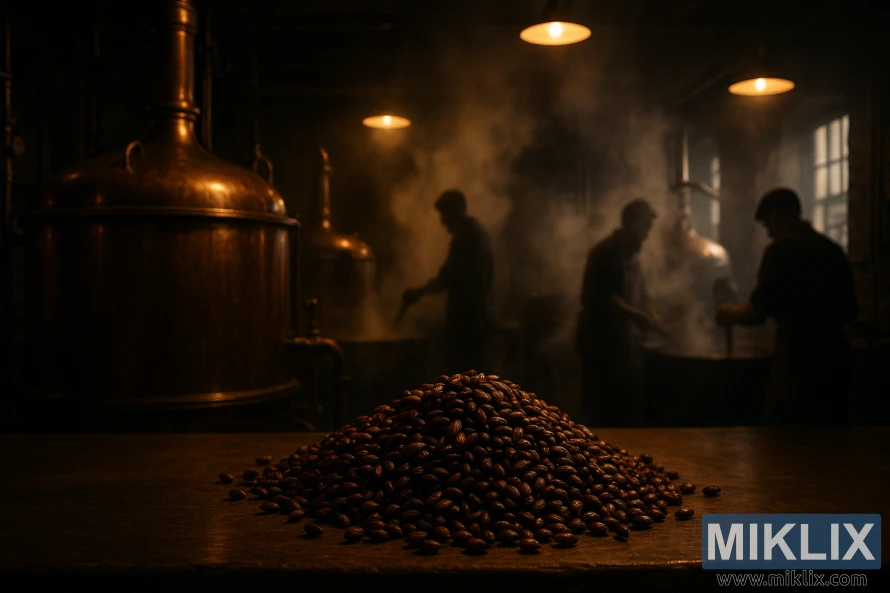
Key Takeaways
- Roasted barley adds depth and complexity to beer.
- It contributes intense roast and espresso flavors.
- Brewing with roasted barley requires understanding its unique characteristics.
- Effective use can result in distinctive and delicious beers.
- Roasted barley is not malted, affecting its flavor profile.
Understanding Roasted Barley in Beer Making
Roasted barley is a critical ingredient in some beer styles, obtained by roasting barley grains to specific flavors. This method imparts a unique taste and color, from deep red to dark brown. It's vital for brewers aiming to include it in their recipes.
Roasted barley stands out as a specialty ingredient in brewing. Unlike malted barley, it hasn't undergone malting. This means it hasn't been converted into fermentable sugars. Instead, it's roasted at high temperatures to develop its distinct flavor and aroma.
The flavor profile of roasted barley varies with roasting temperature and duration. It's renowned for adding intense roast, espresso-like flavors, and dry bitterness to beer. These traits make it a favorite among brewers crafting complex, dark beer styles.
Using roasted barley in brewing offers several advantages:
- It adds depth and complexity to beer flavors.
- It contributes to the beer's color, ranging from deep red to dark brown.
- It provides a dry, bitter finish to the beer.
Mastering the use of roasted barley is essential for achieving the desired flavor in your beer. By incorporating it into your brewing recipe, you can craft unique and flavorful beers that truly stand out.
The History of Roasted Barley in Brewing
The tale of roasted barley in brewing is both captivating and enlightening, mirroring the transformation of beer-making. For centuries, roasted barley has been a cornerstone in brewing, with its roots embedded in ancient civilizations.
Early brewers employed roasted grains to craft beers with unique tastes and attributes. As malting and brewing techniques advanced, so did the roasting of barley, marking a significant evolution.
Roasted barley's impact was most pronounced in specific beer styles, adding a profound, complex flavor. As brewing techniques continued to advance, roasted barley's importance grew, becoming a vital component in contemporary brews.
The journey of brewing with roasted barley is deeply intertwined with the history of beer itself. From ancient methods to modern innovations, the evolution of roasted barley mirrors the creativity and ingenuity of brewers across time.
- Roasted barley's ancient origins
- Evolution of roasting techniques
- Significance in traditional beer styles
- Role in modern brewing practices
Exploring the history of roasted barley in brewing offers profound insights into its role in today's beer production. By delving into its historical context, brewers gain a deeper appreciation for roasted barley's complexities and its role in the rich tapestry of beer.
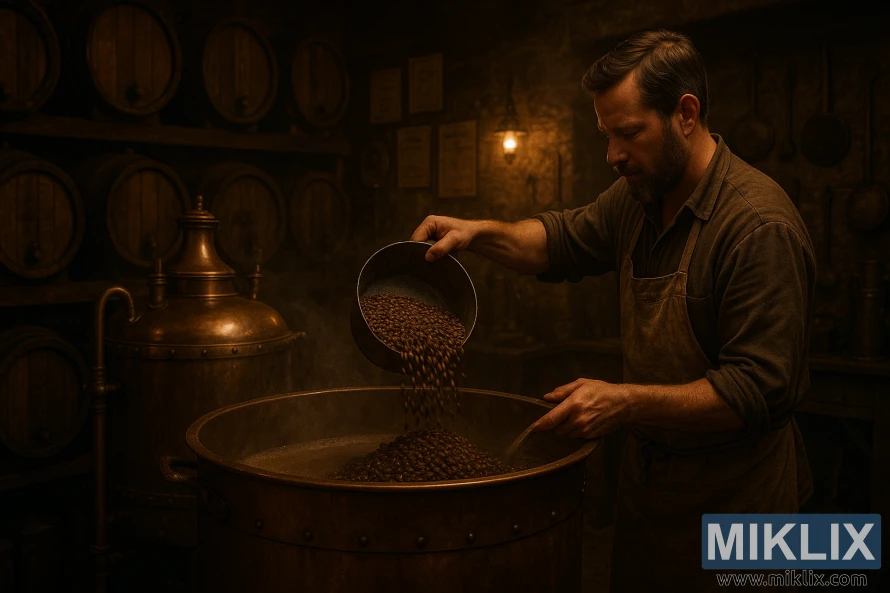
Characteristics of Roasted Barley Beer Styles
Roasted barley beer styles are distinguished by their unique flavor profiles. These can range from bitter and intense to rich and coffee-like. The characteristics of these beer styles are influenced by the roast level, barley type, and brewing process.
Beers made with roasted barley can exhibit a wide range of flavors. For example, stouts and porters are known for their deep, roasted flavors. These often remind one of coffee or chocolate. The roast level significantly impacts the flavor, with lighter roasts adding a subtle roasted taste. Darker roasts, on the other hand, produce a more intense, bitter taste.
The type of barley used also shapes the beer's flavor profile. Roasted barley, in particular, gives beer a bitter, coffee-like flavor. This is often associated with stouts and other dark beer styles.
Incorporating roasted barley into brewing allows brewers to create various beer styles with unique characteristics. By understanding roasted barley's impact on brewing, brewers can craft beers that highlight this ingredient's unique qualities.
The flavor profiles of roasted barley beers can vary significantly. This offers brewers a range of possibilities for creating complex and nuanced beers.
Essential Equipment for Brewing with Roasted Barley
To craft high-quality roasted barley beer, brewers need the right gear. The equipment used for roasting impacts the flavor and quality of the barley. This, in turn, affects the final beer's taste.
Malt roasters are key for achieving precise temperatures and uniform heat. They also allow for controlled airflow. This precision is vital for getting the perfect roast level and flavor.
Some must-have equipment for brewing with roasted barley includes:
- Roasting equipment with precise temperature control
- Milling equipment to grind the roasted barley
- Mashing equipment to extract the desired compounds
- Brewing kettles and hop equipment for bitterness and flavor addition
Investing in quality equipment ensures the roasted barley is top-notch. This leads to a complex and flavorful beer. Keeping the equipment in good condition and using it correctly is also key for consistent results.
Selecting Quality Roasted Barley
To brew exceptional beer, it's essential to select high-quality roasted barley that meets your brewing standards. The quality of roasted barley can significantly impact the flavor, character, and overall quality of the beer.
When choosing roasted barley, several factors come into play. First, consider the level of roast. Roasted barley can range from lightly roasted to deeply roasted, each imparting different flavors to the beer. The type of barley used is also critical, as different varieties can affect the beer's flavor profile.
Quality control measures are vital in ensuring that the roasted barley meets the required standards. Some suppliers, like those producing BEST malts, regularly test their products for contaminants such as N-nitrosodimethylamine (NDMA) to ensure they are below permissible limits. Brewers should look for suppliers that adhere to stringent quality control measures.
- Check the roast level to ensure it matches your beer's style requirements.
- Verify the type of barley used and its origin.
- Opt for suppliers known for their quality control practices.
By carefully selecting high-quality roasted barley, brewers can enhance the flavor and character of their beer, achieving the desired taste and quality. This attention to detail in the brewing process can elevate the beer's overall profile, making it more appealing to beer enthusiasts.
Preparation Techniques for Roasted Barley
The art of preparing roasted barley requires understanding different roasting methods and their effects on beer quality. Roasted barley is a key ingredient in many beer styles, adding to the flavor, color, and character of the brew.
To get the right flavor, brewers must choose the right roasting method for the barley. Various roasting techniques can produce a wide range of flavors, from deep roast to subtle notes. For example, Briess Roasted Barley and imported roasted barleys have different Lovibond ratings, with the latter often being closer to 500º L.
- Selecting high-quality roasted barley that meets the desired Lovibond rating.
- Understanding the roasting method used, whether it's drum roasting or another technique.
- Adjusting the brewing process to accommodate the characteristics of the roasted barley.
By mastering these preparation techniques, brewers can unlock the full flavor of roasted barley. The choice of roasting method greatly impacts the final product. It's vital to experiment and find the best approach for your brewing needs.
Some key considerations when preparing roasted barley include:
- Ensuring the roasted barley is stored properly to preserve its flavor and aroma.
- Milling the roasted barley to the correct consistency for your brewing equipment.
- Adjusting the mash and sparge processes to optimize the extraction of flavors from the roasted barley.
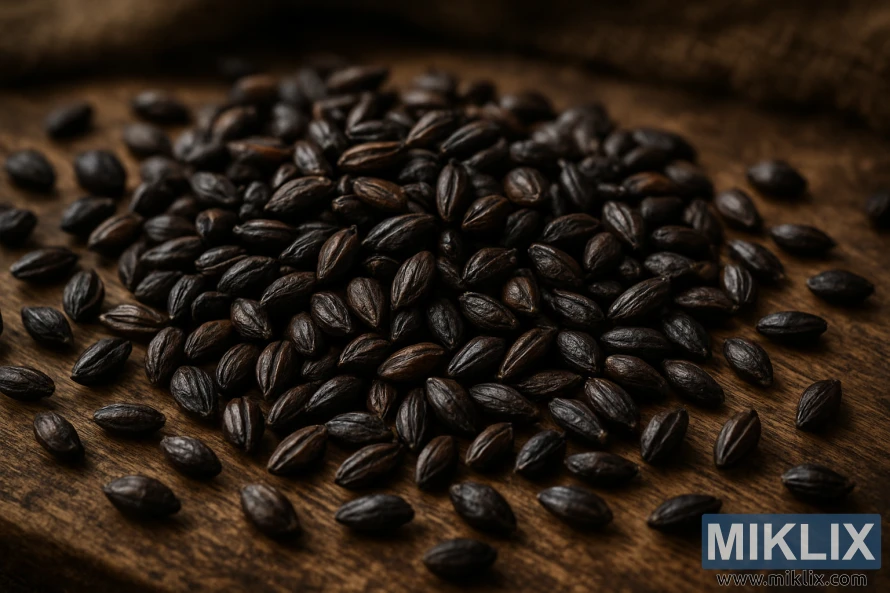
The Brewing Process with Unmalted Roasted Barley
Brewing with unmalted roasted barley demands a unique approach. This barley hasn't gone through malting, which activates enzymes for sugar conversion. This step is essential for turning starches into fermentable sugars.
The brewing journey includes mashing, boiling, and fermentation. In mashing, brewers must remember that unmalted roasted barley doesn't contribute to sugar content. It lacks enzymes. So, the mash must include enough malted barley for enzyme activity.
Roasting unmalted barley at high temperatures kills any enzymes that might have formed during malting. This means brewers depend on malted barley's enzymes for starch conversion. These enzymes are vital for sugar production during mashing.
Boiling introduces hops, adding bitterness, flavor, and aroma. Unmalted roasted barley brings a deep, roasted taste and a dry finish. Adjusting hop amounts and timing can fine-tune bitterness and flavor balance.
Fermentation is where yeast turns mashing sugars into alcohol. The yeast strain chosen can greatly influence the beer's taste. Some yeast strains highlight the roasted flavors from unmalted barley.
By mastering the brewing process for unmalted roasted barley, brewers can craft complex, flavorful beers. These beers showcase the ingredient's full range of possibilities.
Managing Bitterness and Astringency
Roasted barley brings complex flavors to beer but requires careful handling of bitterness and astringency. It's vital to grasp how this ingredient influences your beer's taste. This knowledge is key to mastering the art of brewing.
Bitterness in beer mainly comes from hops, but roasted barley also plays a role. The bitterness it adds depends on the amount used and the brewing method. For example, using more than 3% of Black Malt can introduce dry, bitter notes. Whether these notes are desirable depends on the beer style.
Astringency, linked to roasted barley's tannins, can make beer taste harsh or dry. To control astringency, brewers can tweak the grain bill or their brewing process. For instance, using less roasted barley or adding ingredients that balance astringency can smooth out the flavor.
To effectively balance bitterness and astringency, brewers should consider these strategies:
- Adjust the proportion of roasted barley in the grain bill to achieve the desired flavor profile.
- Select hop varieties that complement the roasted flavors without overpowering them.
- Monitor brewing parameters such as mash temperature and sparge water chemistry to optimize the extraction of flavors from roasted barley.
By managing bitterness and astringency, brewers can craft beers with roasted barley that are complex and balanced. The goal is to find the perfect balance for the specific beer style. This requires experimentation and patience.
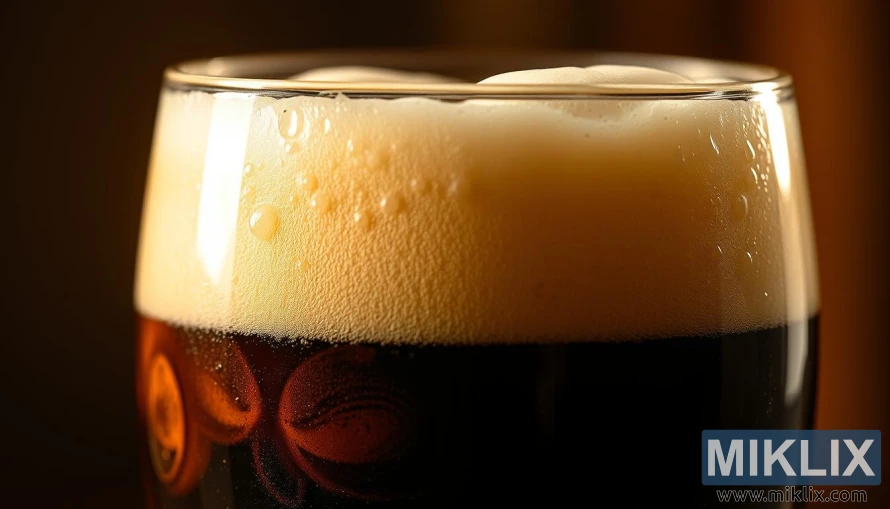
Developing Espresso-Like Flavors
Roasted barley can add a deep, coffee-like taste to brews, similar to espresso. It's a key component in stouts and porters, among other beer styles. This ingredient is essential for achieving that distinctive flavor.
To create these flavors, brewers need to grasp how roasted barley affects taste. The barley's roast level is critical. A darker roast intensifies the coffee taste, while a lighter one softens it.
Techniques like adjusting barley amounts or using specialty malts can refine the flavor. Mixing roasted barley with other grains or specific roasting methods can deepen the espresso taste. This approach enhances the complexity of the flavors.
- Adjusting the roast level of the barley to achieve the desired intensity of espresso flavors.
- Experimenting with different proportions of roasted barley in the grain bill.
- Using specialty malts or other roasted grains to complement the flavor profile.
By perfecting these methods and understanding roasted barley's role, brewers can craft beers with rich, espresso-like flavors. These beers will delight both coffee and beer lovers.
Fermentation Considerations
The fermentation process is vital when brewing with roasted barley. It shapes the beer's final taste and character. The unique flavors and aromas from the Maillard reaction during roasting are influenced by fermentation conditions and yeast selection.
Yeast selection is critical in fermentation. Different yeast strains can produce varying levels of esters and compounds. These interact with the roasted barley, affecting the beer's taste. Some yeast strains enhance the dry, roasted flavors, while others add fruity or spicy notes.
- Yeast strain: Choose a strain that complements the roasted barley flavors.
- Fermentation temperature: Control temperature to optimize yeast performance.
- Oxygen levels: Manage oxygen to support healthy yeast growth.
By carefully managing these factors, brewers can create beers that showcase roasted barley's characteristics. This results in a complex and balanced flavor profile.
Common Challenges and Solutions
Roasted barley brings a unique complexity to beer, but it also comes with brewing challenges. Brewers face issues like managing bitterness and astringency. They also aim to achieve the perfect flavor profile and avoid overpowering roasted flavors.
One major challenge is balancing the intense roast flavor of the barley with other ingredients. Brewers often use a blend of roasted barley and specialty malts, like black malt. This approach helps achieve a balanced flavor. For example, combining roasted barley with black malt can create a stout with a rich color and a less intense roasted taste.
To tackle brewing issues, brewers can tweak their recipes or brewing methods. They might adjust the roasted barley amount, change the mash temperature, or modify the hopping schedule. These adjustments help brewers overcome common challenges and craft high-quality beers that highlight roasted barley's unique traits.
- Monitor and adjust the brewing process to manage bitterness and astringency.
- Experiment with different ratios of roasted barley to other ingredients to achieve the desired flavor profile.
- Consider using a blend of roasted barley and other specialty malts to balance flavors.
Understanding brewing challenges with roasted barley and applying effective solutions allows brewers to create complex, flavorful beers. This meets their expectations and showcases roasted barley's unique qualities.
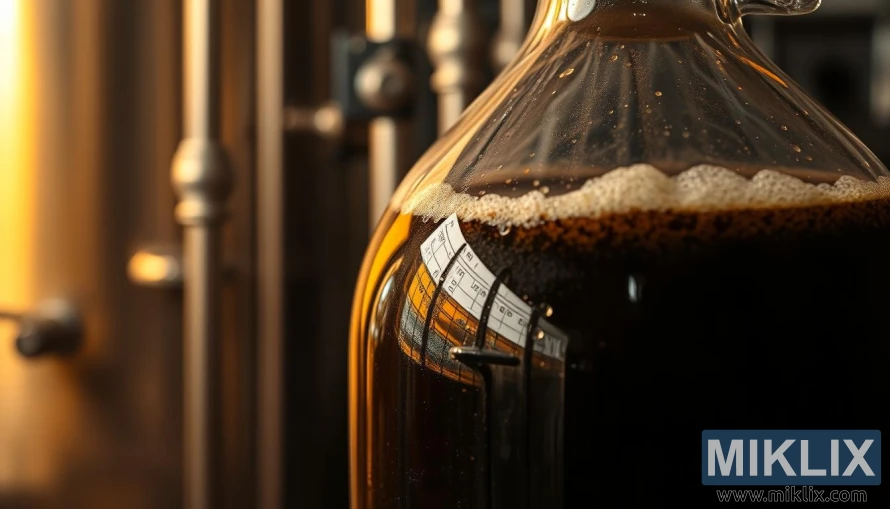
Fine-Tuning Your Recipe
Mastering the balance in your beer recipe demands a deep understanding of roasted barley's role. This ingredient is critical, shaping the beer's taste. Knowing its characteristics guides your recipe development.
When adjusting your recipe, think about the roasted barley's ratio to other ingredients. The quality of roasted barley, adhering to standards like HACCP, impacts the final taste. Tweaking the roasted barley amount can fine-tune the roast flavor and dry bitterness.
Refining your recipe involves experimenting with roasted barley ratios and observing flavor changes. This journey requires patience and a grasp of roasted barley's impact on beer character.
Through meticulous fine-tuning, you can craft a beer that highlights roasted barley's distinct qualities. This results in a beer with a rich, complex flavor profile.
Quality Assessment and Tasting Notes
Assessing the quality of beers made with roasted barley is a vital step in brewing. Brewers can craft beers that meet their standards by understanding roasted barley's characteristics. Sensory evaluation covers the beer's appearance, aroma, flavor, and overall character.
In evaluating roasted barley beers, brewers focus on several key aspects. The beer's appearance offers initial clues about its quality, with clarity and color being significant. The aroma is also critical, featuring roasted and sometimes espresso-like notes from the barley.
Tasting notes are vital for a thorough quality assessment. Roasted barley beers can have intense roast to dry bitterness flavors. Some beers display complex characteristics, akin to caramel malts, with sweet flavors from light caramel to toffee or burned sugar.
- Assess the beer's appearance for clarity and color.
- Evaluate the aroma for roasted and espresso-like notes.
- Taste the beer to identify its flavor profile and complexity.
By meticulously evaluating these aspects, brewers can improve their recipes and techniques. This leads to producing high-quality beers that highlight roasted barley's unique traits. Quality assessment and tasting notes are, then, essential for achieving brewing excellence.
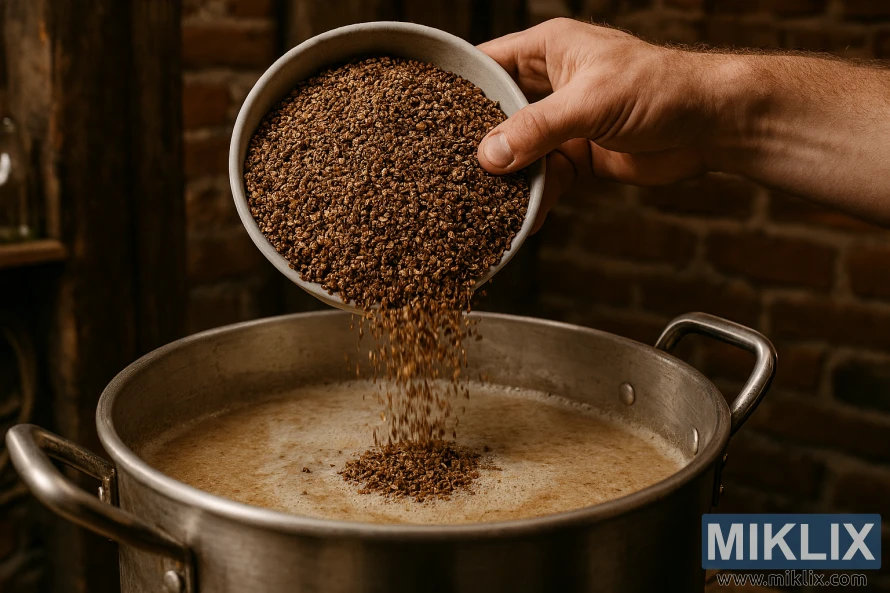
Conclusion
Mastering roasted barley in brewing demands a thorough grasp of its traits and the brewing process. By adhering to best practices, such as choosing high-quality roasted barley and fine-tuning the recipe and brewing process, brewers can craft complex beers. These beers highlight the distinct qualities of roasted barley.
It's vital to remember that roasted barley is not a replacement for Black Malt (500º L). This malt is much darker and mainly used for color adjustment. By applying brewing tips, like managing bitterness and astringency, brewers can elevate their craft. They can then create delicious beers.
With the correct techniques and ingredients, brewers can fully exploit roasted barley's capabilities. They can experiment with various recipes and brewing methods. This allows them to develop their unique voice and style, expanding the possibilities of what can be achieved with roasted barley.
Further Reading
If you enjoyed this post, you may also like these suggestions:
- Using Honey as an Adjunct in Beer Brewing
- Using Wheat as an Adjunct in Beer Brewing
- Using Maize (Corn) as an Adjunct in Beer Brewing
